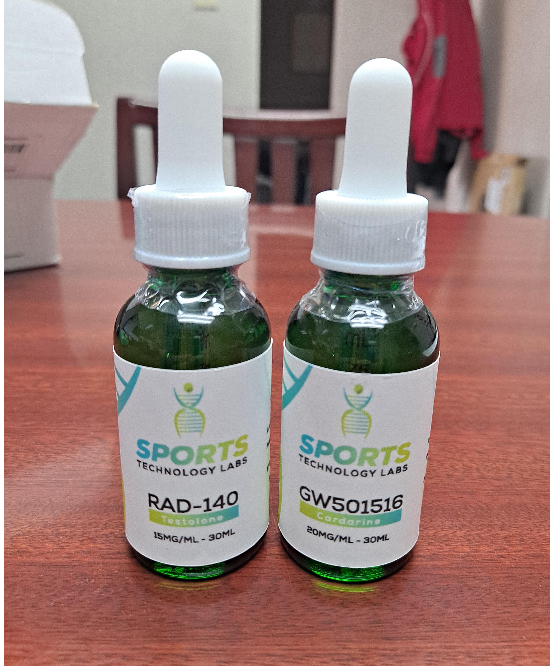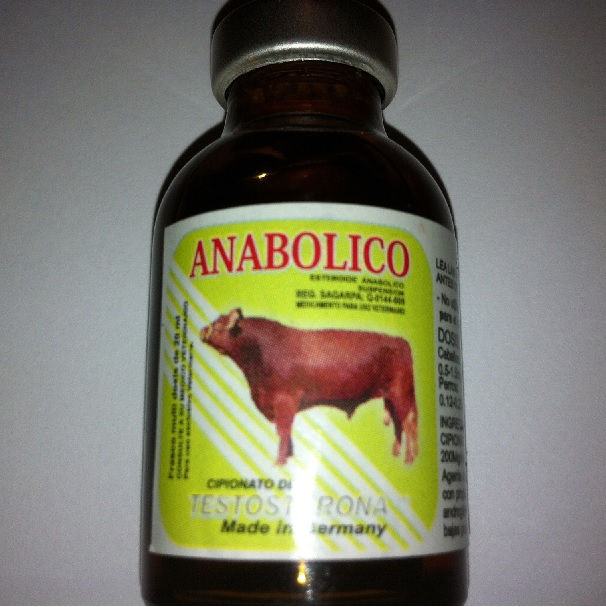SARMs vs Steroids: Are SARMs Safer?
 Disclaimer: The following article is for educational purposes only and does not promote the use of illegal substances. If you have any questions or concerns, Dr. Touliatos is currently available for consultation.
Disclaimer: The following article is for educational purposes only and does not promote the use of illegal substances. If you have any questions or concerns, Dr. Touliatos is currently available for consultation.
SARMs (selective androgen receptor modulators) are highly coveted among the bodybuilding community due to their high-promise marketing claims.
SARM manufacturers claim they mimic the effects of steroids for building muscle mass, yet with fewer side effects.
Is this true? Find out how SARMs really compare to steroids, based on existing medical research and anecdotal evidence and observations.
SARMs, if deemed safe, will serve the same purpose as anabolic steroids in medicine, helping to increase lean muscle mass, red blood cell count, and bone mineral content in patients suffering from cachexia (muscle wasting), anemia, and osteoporosis.
Thus, SARMs were formulated by scientists with the same objectives as anabolic steroids; however, SARMs are intended to be a superior medicine that will not present the cardiovascular, androgenic, hepatic, or estrogenic effects of anabolic steroids being prescribed today.
Contents
How They Work
SARMs and steroids share similarities in how they function, strongly binding to the androgen receptor to promote muscle building, strength, and fat loss in users.
However, new-generation SARMs, formulated in the late 1990s, are non-steroidal and thus not exogenous testosterone. Consequently, this has sparked debate among the bodybuilding community, with the claim of being able to take SARMs and remain ‘natural’.
A unique structural characteristic of SARMs is tissue selectivity, a mechanism that aims to stimulate anabolism in desirable cells while inhibiting unwanted effects in others, thus potentially eliminating or reducing the side effects associated with anabolic steroids.
Disclosure: We do not accept any form of advertising on Inside Bodybuilding. We monetize our practice via doctor consultations and carefully chosen supplement recommendations, which have given our patients excellent results.
Best SARMs Company in 2023

Sports Technology Labs is our #1 rated source for SARMs, due to them consistently formulating products at >98% purity (authenticated via independent certificates of analysis).
Sports Technology Labs is one of the few companies to stock every SARM. They also have a 0% credit card fee policy (other sources charging up to 10%).
Discount code: Save 15% on Sports Technology Labs' SARMs by using discount code inside15.
Legal Status
Anabolic steroids are classified as Schedule III-controlled substances and are thus illegal in the US and many other countries in the world. The only exception to this is being prescribed steroids by a doctor to treat a medical condition, such as testosterone for hypogonadism.
The legality of SARMs is more of a gray area. They are perfectly legal to purchase for research purposes; thus, if you are buying SARMs to administer liquid drops to your rat and observe the effects, this is perfectly within the confines of the law.
However, as SARMs have not been approved by the FDA for human use, they are technically illegal to purchase or sell for human consumption due to their recent formulation and long-term effects not yet being established.
Do Steroids Build More Muscle?
SARMs and anabolic steroids largely produce the same benefits for users, namely increased muscle mass, strength, and fat loss (albeit to varying degrees).
There is medical research to suggest users’ results on anabolic steroids are significantly enhanced compared to SARMs, with the latter only building a fraction of the lean mass in comparison. Our anecdotal findings also support this hypothesis.
In one trial, researchers found that humans being administered SARMs increased their fat-free mass by 1–1.5 kg over 4-6 weeks (1).
However, the testosterone enanthate group gained 5-7kg in fat-free mass (on dosages of 300 and 600 mg/week).
Furthermore, Dr. Thomas O’Connor has observed major adverse effects in numerous patients on SARMs, relating to their cholesterol and liver profiles. Yet he mentions such patients reporting little to no change in body composition.
Are SARMs Really Safer Than Steroids?
We have almost a century’s worth of medical research concerning anabolic steroids’ effects since the creation of testosterone in 1935. Thus, steroids’ benefits, side effects, and safety are generally well known in the short and long term.
However, we only have a limited amount of research available for SARMs (particularly concerning their effects on humans) due to their recent discovery. Thus, SARMs are classified as investigational drugs, whereas anabolic steroids are not.
Some anabolic steroids are FDA-approved in medicine, such as anavar (oxandrolone), testosterone, and deca durabolin (nandrolone), indicating an acceptable level of safety for treating chronic diseases.
For example, Anavar has been successfully prescribed to men, women, and children for cachexia, indicating its mild nature and high tolerance.
Dr. Thomas O’Connor, part of our medical team, has treated thousands of men on anabolic steroids for almost two decades.
In contrast, he has also treated over 2,000 men on SARMs, accumulating data over a ten-year period.
Based on his vast anecdotal evidence and extensive analysis of patients’ labs, he concludes that SARMs are more dangerous than anabolic steroids. The main side effects he has observed include cardiovascular strain, testosterone suppression, and liver stress.
Dr. O’Connor likens the hepatotoxic effects of SARMs to the equivalent of taking a huge dose of anavar (50 mg/day).
The FDA has also found evidence of liver and cardiovascular complications in SARM users (even in the short term). In 2017, the FDA labeled SARMs as ‘potentially dangerous‘ and successfully shut down numerous online websites that were labeling them as ‘dietary supplements’ (for human use) instead of research chemicals.
Side Effects (SARMs vs Steroids)
In theory, SARMs’ side effects should be milder than those of anabolic steroids due to the mechanics of tissue selectivity. However, in practice, we find SARMs’ side effects are similar (or even more severe than steroids).
Blood Pressure
One of the reasons why anabolic steroids are not a perfect medicine is due to their negative effect on HDL/LDL cholesterol and blood pressure.
Different steroids will pose different levels of cardiovascular risk. For example, oral steroids such as dianabol or anadrol can cause large fluctuations in cholesterol, significantly increasing the risk of hypertension. However, injectable steroids, such as testosterone or deca durabolin, only have mild effects on blood lipids.
Based on patients’ lipid profiles, we have evidence of SARMs notably reducing HDL cholesterol levels (beneficial cholesterol) and increasing the risk of arteriosclerosis.
We find SARMs’ negative effects on the heart to be similar in severity to oral steroids, due to the same method of administration (orally).
When taken by mouth and swallowed, SARMs and oral steroids are processed by the liver, increasing the hepatic lipase enzyme and having an adverse effect on HDL cholesterol.
Thus, it is possible that certain injectable steroids are actually safer from a cardiovascular perspective compared to SARMs, bypassing the liver and maintaining a healthier blood lipid profile.
Liver Toxicity
As previously mentioned, liquid SARMs will be broken down by the liver, causing ALT/AST enzymes to rise, signifying inflammation and stress to the organ.
This is a similar effect to C-17 alpha-alkylated oral steroids, which have the potential to cause liver damage if abused.
There is research demonstrating the high hepatotoxic effects of SARMs after two previously healthy males developed hepatocellular-cholestatic liver injuries via short-term use (2). The first male used LGD-4033 (Ligandrol) for 9 weeks, and the second male used RAD140 (Testolone) for 4 weeks.
We find these outcomes to be extremely alarming, due to the short nature of use and given the typical resilience of the liver, which displays powerful self-healing properties (3); and thus the ability to endure high levels of stress without injury.
Injectable steroids will almost certainly be safer than SARMs in regards to liver health. Even mild oral steroids such as anavar, primobolan acetate, and testosterone undecanoate are likely to present significantly less hepatic risk.
Testosterone Suppression
Anabolic steroids are forms of exogenous testosterone; thus, when the body detects excessive levels of artificial testosterone, it shuts down natural production.
The effects can be felt in full force when a steroid cycle ceases, with users experiencing diminished libido, sexual function, low energy, and decreased well-being. Such side effects are often temporary, lasting several weeks or months, depending on the steroids used.
Potent compounds like anadrol or trenbolone may cause hypogonadism (total shutdown), whereas mild steroids, such as anavar or primobolan, may only cause a moderate decrease in testosterone.
SARMs are not steroidal compounds; however, their high affinity when binding to the androgen receptor can cause decreases in endogenous testosterone (4). This results in a similar, transient effect on testosterone levels, like steroids.
The extent of testosterone suppression is not yet fully known with SARMs; however, we have seen 60–70% reductions in total testosterone via our SHBG tests. It is also common practice for bodybuilders to utilize post-cycle therapies after SARM cycles in an attempt to recover their natural testosterone production.
Thus, moderate interference with the HPTA (hypothalamic-pituitary-testicular axis) can be expected on SARMs.
We see the more potent SARMs causing greater decreases in natural testosterone, such as LGD-4033 (Ligandrol) and RAD 140 (Testolone), in comparison to milder SARMs, such as S4 (Andarine) and MK-2866 (Ostarine).
Gynecomastia
Certain anabolic steroids can cause gynecomastia, otherwise known as gyno, which is essentially the expansion of breast tissue in men.
In mild stages, these can appear as puffy nipples; however, in the latter stages, the pectorals can resemble female breasts.
Several steroids can cause gynecomastia due to the aromatase enzyme converting testosterone into estrogen. Other steroids can directly stimulate the estrogen receptors at a cellular level, such as anadrol, which does not have the aromatizing enzyme present.
SARMs do not aromatize; however, they can indirectly elevate estrogen levels, resulting in gynecomastia. This occurs due to SARMs competing with a user’s natural testosterone for binding to the androgen receptor. SARMs comfortably win this battle due to a significantly higher binding affinity, leaving natural testosterone levels more readily available for binding to estrogen and DHT receptors.
Thus, gynecomastia is still possible on SARMs, as is water retention and hair loss.
A mild anti-aromatase inhibitor, such as Arimistane (Androsta-3,5-diene-7,17-dione), may be taken during SARM cycles to counteract high estrogen side effects.
In contrast, we see bodybuilders typically taking more potent AIs or SERMs during steroid cycles to counteract estrogenic effects.
Note: There are ‘dry steroids’ that do not raise estrogen levels, creating a dry physique that poses no threat of gynecomastia. A few examples of such compounds are: anavar, superdrol, turinabol and winstrol.
Administration
Anabolic steroids are typically available in injectable or oral form.
However, due to SARMs technically being a research chemical, they seldom come in tablet form but instead as a liquid.
Bodybuilders generally will administer liquid SARMs orally, either by swallowing it immediately or placing it under the tongue (sublingually) and letting it sit for 10–15 seconds before swallowing (for greater absorption via contact with the mucus membrane).
Injection is generally considered the less convenient, yet more optimal, administration method for both compounds. This is due to injectables causing less hepatic and cardiovascular stress.

Increased damage to the liver can occur with orals, as they have to be broken down by the organ upon entering the bloodstream (5). Furthermore, when being processed by the liver, orals can elevate hepatic lipase, exacerbating blood pressure via the increase of hepatic lipase.
When comparing SARMs vs. steroids for method of entry, steroids are more convenient, as users can simply swallow a tablet or inject the substance.
Finding SARMs in tablet form is possible, yet much less common. When swallowing liquid SARMs, they often have a strong or foul taste that lingers afterwards.
SARMs More Suitable for Women
We find that most anabolic steroids are not suitable for women to take due to high incidents of virilization (masculine side effects).
Women on steroids can experience: enlarged clitoris size, breast reduction, deeper voice, irregular menstrual cycles, and hair growth on the body.
There are exceptions to this rule, such as anavar, which females can cycle in moderate dosages and avoid masculine effects.
Despite limited research regarding SARMs’ relation to virilization, our anecdotal findings suggest they are better tolerated by women due to tissue selectivity reducing androgenicity.
However, notable risks to the liver and heart still apply to women taking SARMs. Such health risks appear to be considerably less when taking mild, female-friendly steroids, such as anavar.
Fake Products
Both anabolic steroids and SARMs are commonly counterfeited on the black market, presenting risks to users’ health.
However, pharmaceutical-grade steroids are available to purchase, with several being prescribed for medical purposes (which then leak onto the black market).
Thus, pharmaceutical grade ensures a high-quality product that is produced in a lab by scientists working for a pharmaceutical company rather than being formulated in an underground lab by a non-medical professional.
There is no pharmaceutical grade available for SARMs, as it is not currently prescribed by doctors due to a lack of FDA approval.
Therefore, finding a reliable SARM source that provides what is truly on the label may be more challenging than finding pharmaceutical-grade steroids.
SARMs vs. Steroids: Who Wins?
We have almost a century’s worth of research documenting the effects of anabolic steroids, compared to just two decades worth of research for SARMs (with limited human trials).
Based on existing studies and our anecdotal data, there is evidence to suggest SARMs are more harmful than steroids, with considerably less impact on body composition.
Therefore, the risk-to-reward ratio looks significantly better for steroids vs. SARMs. Particularly when administrating ‘safer steroids‘ such as testosterone, which us physicians routinely prescribe on a daily basis to millions of men worldwide.



